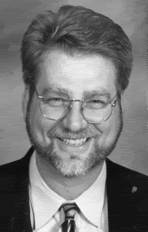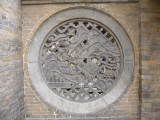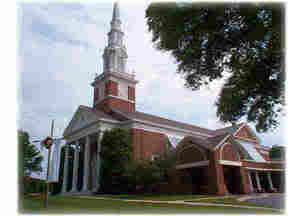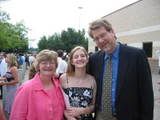resurrection, seeing and believing (john 20)
The Christian life, at its core, is about an experience. Were you there when they crucified my Lord? Well, no. Were you there when they laid him in the tomb? Yes…no. I was somewhere else, actually I had fled with the crowd, I didn’t see it, I heard about it later. The Christian life, at its core, is about an experience. Last Sunday morning I stood here with many of you and sang the verses of “Christ The Lord is Risen Today”, the descant soaring above, the thunderous praise of congregation and organ. It was something. How can I describe that to someone who was not here? It was like heaven, it was like an out of body experience!
How do we describe these experiences for those who are not present? This was the predicament, only magnified, of the early disciples, soon to be apostles: This amazing Easter message, that Jesus was no longer dead, but out of the tomb, the stone rolled away, he appeared to the women, we didn’t believe them at first, then to Peter and the 12, then to over 500 then to James, then to Paul…he is alive. And yet, they had to explain it, they had make sense of it, they had to tell it, it was such good news.
When we tell someone about an experience, we use images, metaphors, “it is like this” we might say. John the Evangelist was a master at telling us about the good news through the signs of Jesus. John has been called a book of signs: I am the bread of life, Jesus would say. I am the good shepherd. I am the vine and you are the branches. We can visualize the vine and those branches, knit and woven together, and learn something about the relationship between the believer and the Lord. John’s Gospel shows us, and that’s good, for we want to visualize it, we want to see. We are like Thomas. We had heard with our ears, second-hand, so to speak, but we would like to see with our own eyes. Spiritually speaking, we are all from Missouri: we are all saying, “show me”.
John is a book of signs. And the sign given to Thomas is the concluding one. “I will not believe”, Thomas had said, “unless I see in his hands the nail prints, and place my finger in his wounds”. In other words, I want to experience it myself.
Were you there when the crucified my Lord?, they asked Thomas. Well, no. Were you there when they laid him in the tomb? Well, no. He needed to experience it. Pam and I experienced the joy of raising two daughters. Maybe we are not finished! These were exciting, exasperating experiences, it was always something new. I will make a confession: I often wished they would listen to me, follow my advice. “Don’t climb the fence, don’t sit on your sister, its not good for her, if you eat chocolate all day you will be miserable”. I wanted them to defer to my authority as a parent, and trust me.
But it was not to be. They had to discover everything, all along the way, for themselves. The same is true for you and me, if we are honest. The same was true for Thomas. He could not take the word of Peter, or James, or John, not to mention the others. He wanted to see for himself. And the Gospel is not something that we can impose on someone else. We must discover it for ourselves, like a treasure hidden in a field.
There is something to be said for this approach. We cannot live off of the spiritual experiences of others, drawing down the spiritual capital of the past. It has to come alive, for us. This was so with Thomas, and it is so for you and me.
Thankfully, the disciples allowed Thomas his quest. History has referred to him as “doubting Thomas”, but in his skepticism he represents all of us who come to faith and continue in faith with perseverance and struggle. Thomas is a seeker. Pam and I have a good friend, John Mathew, who is a minister in Canada, and whose roots are in the church of the apostle Thomas, rooted in India. In the first century, after the resurrection, Thomas had taken the gospel to India. But earlier in John’s Gospel, Thomas had asked Jesus, upon his impending departure, “We do not know where you are going? How can we know the way?” And Jesus had responded, “I am the way, the truth and the life.
Thomas is the one who is in conversation with Jesus about the faith, and included in that faith is struggle, doubt. My friend John says that Thomas is the most influential theologian of the first century Christian Church. John quotes Frederick Buechner:
“Whether your faith is that there is a God or that there is no God, if you don’t have any doubts, you are either kidding yourself or asleep…doubts are ants in the pants of faith. They keep it awake and moving”.
Don’t disparage doubt so quickly. As the “Hymn of Promise” captures it, “in our doubt, there is believing”. And so we do not discount Thomas. Neither did his friends, the disciples. “If you won’t take my word for it”, they say, “try this yourself”. Come and see. This is the evangelical invitation. Come and see. And he does, and there is the confession of faith: “My Lord my God”.
Then follows the pronouncement of Jesus. Have you believed because you have seen me? Blessed are those who have not seen, and yet believe. ckey Efird, one of my professors at Duke Divinity School spoke of those who were always wanting to see signs. Jesus did not think too highly of those always looking for a sign, a proof. And so he extended to all of those who would come later a blessing, a beatitude: Blessed are those who have not seen, and yet believe.
There would come a generation, successive generations of men and women who would believe not because of experiences like those of Thomas, but who would believe through the signs written in the book. The thrust of Jesus always seemed to be just the opposite of our usual way of thinking: not if you see, you might believe. But if you believe, you will see!
It’s March Madness, basketball moving toward an exciting finish, two North Carolina teams still in it. You would not know it from the weather, but today is also the beginning of baseball season. Some of you have seen the movie, “Field of Dreams”. It is based on a novel entitled “Shoeless Joe”, as in Shoeless Joe Jackson, the baseball star who was banned from the sport for life, perhaps unfairly, because of gambling. In the movie and book Ray, the farmer, hears a voice. “if you build it, they will come”. He gradually realizes that he must build a baseball diamond on his farm, and he does. Miraculously, baseball greats from the past come out to play on his field. And yet he cannot show his spectacle to others; they do not believe, and so they cannot see. Ray believes, and thus he sees.
Blessed are those who have not seen, and yet believe. For the believer, all of life can be a sign. With many of you I have followed the progress of Kelly Braxton through her husband Ken’s writings on their Caring Bridge website. I asked Ken if I could share this experience. Kelly is fighting cancer, and is needing to gain weight (this is not the problem for most of us).
One evening I ran into Ken at Harris Teeter, not far from where we both live. I was buying supplies for all of the adult children, Liz, Abby, Jack, and some of their friends, who were coming home for the Easter holiday. Ken was there to buy ice cream for Kelly. She has not had much of an appetite lately, but that evening she was hungry. And so he was there for one thing: her favorite ice cream. We talked for a couple of minutes and did our shopping. I have observed that men do not spend long periods of time in grocery stores! The next day Ken commented that their family’s favorite ice cream was on sale—buy one, get one free. It was, he said, a sign.
If you believe, you will see. And so, I ask you, are your eyes open to see the signs? A beautiful Bradford pear tree, in bloom. A shooting star. An unexpected encounter with a long-lost friend.
After the resurrection, we look for the signs, by faith. Christianity is never going to be intellectually proven to us. Instead, as Anselm of the early church expressed it, “I believe in order that I might understand”. Not “seeing is believing”, but “believing is seeing”.
And so the good news takes on new life. Were you there when they crucified my Lord? No…well maybe that night I spent in the shelter. Were you there when they laid him in the tomb? That afternoon when I walked with my friend to the graveside. Were you there when God raised him from the dead? I was there, I was there….
Because we believe, we see. And the signs of John’s book become not proofs but living experiences with one who walks with us and talks with us and tells us that we are his own. The Easter beatitude becomes ours, and with it the command of Jesus, “as the father sent me, so I send you”. We are sent forth with this new discovery, which of course we want to share as joyfully and helpfully with others as we possibly can. Because we believe we see, and because we believe, John tells us, we have the promise of life in his name.
Prayer: I ask three things, O Lord: To see thee more clearly, to love thee more dearly, to follow thee more nearly, day by day. Amen.
Sources: John Mathew, “Christophanic Courage To Change One’s Mind”, Light of Life. W. P. Kinsella, Shoeless Joe. Frederick Buechner, Wishful Thinking.
How do we describe these experiences for those who are not present? This was the predicament, only magnified, of the early disciples, soon to be apostles: This amazing Easter message, that Jesus was no longer dead, but out of the tomb, the stone rolled away, he appeared to the women, we didn’t believe them at first, then to Peter and the 12, then to over 500 then to James, then to Paul…he is alive. And yet, they had to explain it, they had make sense of it, they had to tell it, it was such good news.
When we tell someone about an experience, we use images, metaphors, “it is like this” we might say. John the Evangelist was a master at telling us about the good news through the signs of Jesus. John has been called a book of signs: I am the bread of life, Jesus would say. I am the good shepherd. I am the vine and you are the branches. We can visualize the vine and those branches, knit and woven together, and learn something about the relationship between the believer and the Lord. John’s Gospel shows us, and that’s good, for we want to visualize it, we want to see. We are like Thomas. We had heard with our ears, second-hand, so to speak, but we would like to see with our own eyes. Spiritually speaking, we are all from Missouri: we are all saying, “show me”.
John is a book of signs. And the sign given to Thomas is the concluding one. “I will not believe”, Thomas had said, “unless I see in his hands the nail prints, and place my finger in his wounds”. In other words, I want to experience it myself.
Were you there when the crucified my Lord?, they asked Thomas. Well, no. Were you there when they laid him in the tomb? Well, no. He needed to experience it. Pam and I experienced the joy of raising two daughters. Maybe we are not finished! These were exciting, exasperating experiences, it was always something new. I will make a confession: I often wished they would listen to me, follow my advice. “Don’t climb the fence, don’t sit on your sister, its not good for her, if you eat chocolate all day you will be miserable”. I wanted them to defer to my authority as a parent, and trust me.
But it was not to be. They had to discover everything, all along the way, for themselves. The same is true for you and me, if we are honest. The same was true for Thomas. He could not take the word of Peter, or James, or John, not to mention the others. He wanted to see for himself. And the Gospel is not something that we can impose on someone else. We must discover it for ourselves, like a treasure hidden in a field.
There is something to be said for this approach. We cannot live off of the spiritual experiences of others, drawing down the spiritual capital of the past. It has to come alive, for us. This was so with Thomas, and it is so for you and me.
Thankfully, the disciples allowed Thomas his quest. History has referred to him as “doubting Thomas”, but in his skepticism he represents all of us who come to faith and continue in faith with perseverance and struggle. Thomas is a seeker. Pam and I have a good friend, John Mathew, who is a minister in Canada, and whose roots are in the church of the apostle Thomas, rooted in India. In the first century, after the resurrection, Thomas had taken the gospel to India. But earlier in John’s Gospel, Thomas had asked Jesus, upon his impending departure, “We do not know where you are going? How can we know the way?” And Jesus had responded, “I am the way, the truth and the life.
Thomas is the one who is in conversation with Jesus about the faith, and included in that faith is struggle, doubt. My friend John says that Thomas is the most influential theologian of the first century Christian Church. John quotes Frederick Buechner:
“Whether your faith is that there is a God or that there is no God, if you don’t have any doubts, you are either kidding yourself or asleep…doubts are ants in the pants of faith. They keep it awake and moving”.
Don’t disparage doubt so quickly. As the “Hymn of Promise” captures it, “in our doubt, there is believing”. And so we do not discount Thomas. Neither did his friends, the disciples. “If you won’t take my word for it”, they say, “try this yourself”. Come and see. This is the evangelical invitation. Come and see. And he does, and there is the confession of faith: “My Lord my God”.
Then follows the pronouncement of Jesus. Have you believed because you have seen me? Blessed are those who have not seen, and yet believe. ckey Efird, one of my professors at Duke Divinity School spoke of those who were always wanting to see signs. Jesus did not think too highly of those always looking for a sign, a proof. And so he extended to all of those who would come later a blessing, a beatitude: Blessed are those who have not seen, and yet believe.
There would come a generation, successive generations of men and women who would believe not because of experiences like those of Thomas, but who would believe through the signs written in the book. The thrust of Jesus always seemed to be just the opposite of our usual way of thinking: not if you see, you might believe. But if you believe, you will see!
It’s March Madness, basketball moving toward an exciting finish, two North Carolina teams still in it. You would not know it from the weather, but today is also the beginning of baseball season. Some of you have seen the movie, “Field of Dreams”. It is based on a novel entitled “Shoeless Joe”, as in Shoeless Joe Jackson, the baseball star who was banned from the sport for life, perhaps unfairly, because of gambling. In the movie and book Ray, the farmer, hears a voice. “if you build it, they will come”. He gradually realizes that he must build a baseball diamond on his farm, and he does. Miraculously, baseball greats from the past come out to play on his field. And yet he cannot show his spectacle to others; they do not believe, and so they cannot see. Ray believes, and thus he sees.
Blessed are those who have not seen, and yet believe. For the believer, all of life can be a sign. With many of you I have followed the progress of Kelly Braxton through her husband Ken’s writings on their Caring Bridge website. I asked Ken if I could share this experience. Kelly is fighting cancer, and is needing to gain weight (this is not the problem for most of us).
One evening I ran into Ken at Harris Teeter, not far from where we both live. I was buying supplies for all of the adult children, Liz, Abby, Jack, and some of their friends, who were coming home for the Easter holiday. Ken was there to buy ice cream for Kelly. She has not had much of an appetite lately, but that evening she was hungry. And so he was there for one thing: her favorite ice cream. We talked for a couple of minutes and did our shopping. I have observed that men do not spend long periods of time in grocery stores! The next day Ken commented that their family’s favorite ice cream was on sale—buy one, get one free. It was, he said, a sign.
If you believe, you will see. And so, I ask you, are your eyes open to see the signs? A beautiful Bradford pear tree, in bloom. A shooting star. An unexpected encounter with a long-lost friend.
After the resurrection, we look for the signs, by faith. Christianity is never going to be intellectually proven to us. Instead, as Anselm of the early church expressed it, “I believe in order that I might understand”. Not “seeing is believing”, but “believing is seeing”.
And so the good news takes on new life. Were you there when they crucified my Lord? No…well maybe that night I spent in the shelter. Were you there when they laid him in the tomb? That afternoon when I walked with my friend to the graveside. Were you there when God raised him from the dead? I was there, I was there….
Because we believe, we see. And the signs of John’s book become not proofs but living experiences with one who walks with us and talks with us and tells us that we are his own. The Easter beatitude becomes ours, and with it the command of Jesus, “as the father sent me, so I send you”. We are sent forth with this new discovery, which of course we want to share as joyfully and helpfully with others as we possibly can. Because we believe we see, and because we believe, John tells us, we have the promise of life in his name.
Prayer: I ask three things, O Lord: To see thee more clearly, to love thee more dearly, to follow thee more nearly, day by day. Amen.
Sources: John Mathew, “Christophanic Courage To Change One’s Mind”, Light of Life. W. P. Kinsella, Shoeless Joe. Frederick Buechner, Wishful Thinking.




 Carter's Roost
Carter's Roost




0 Comments:
Post a Comment
<< Home